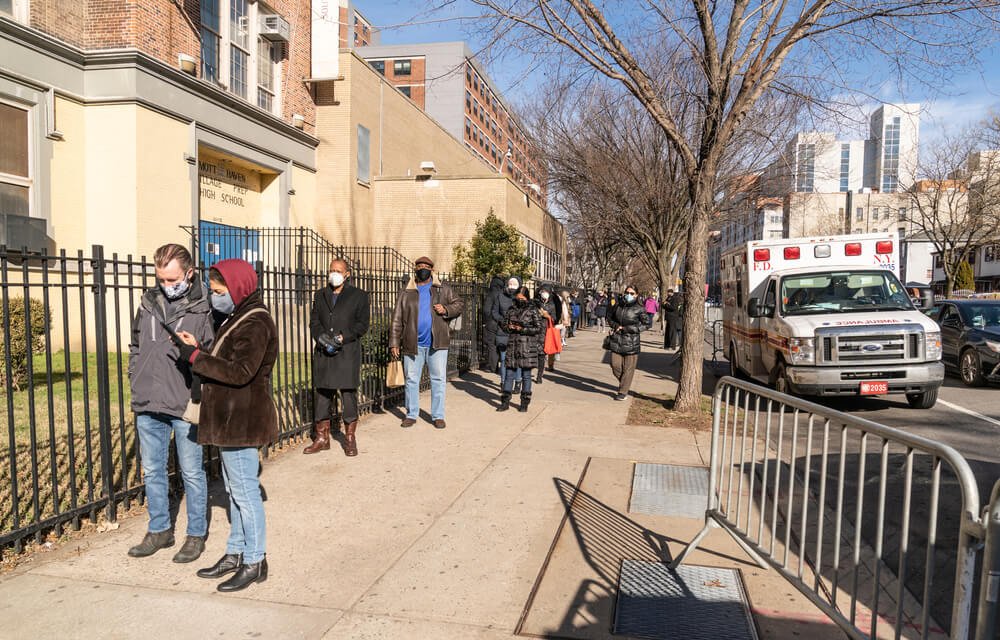Now that we have approved vaccines to protect against the virus that causes COVID-19, leaders in governments around the world are desperately seeking ways to increase the number of people who can be inoculated, and speed up the process. So far their proposals include giving just one dose instead of the two-dose regimen; giving two half-doses; delaying the second dose; and a mix-and-match idea of giving two doses but not worrying about whether both doses are the same vaccine. Many of these ideas are intended as stop-gaps until more doses of more vaccines become available. President-elect Biden has said he wants all the doses available to get into Americans’ arms now, promising to use federal authority once he’s president to expedite the production of additional doses.
The urge to stretch limited doses is natural. But in terms of public health, it could be disastrous. While the research community is eager to test some of these ideas in carefully-controlled trials to get real data about whether they could work, many scientists have flocked to whatever communication channels they can to warn the public that implementing such ideas without rigorous testing would be a huge mistake.

“It is not worth risking an untested vaccine regimen when we are so tantalisingly close to having enough vaccines for everyone, especially when we know the current two-shot regimen is broadly protective,” wrote virologist Angela Rasmussen and infectious disease expert Ilan Schwartz in a recent op-ed in The Guardian.
While it may be tempting to brush off these warnings as knee-jerk reactions from people who have been trained to want as much data as possible, the public health threat posed by changing vaccine dosing regimens is very serious.
You’ve probably heard that it’s dangerous to stop midway through a course of antibiotics, because doing so allows bacteria to become resistant to those drugs. In much the same way, using half-measures with COVID-19 vaccines could allow the SARS-CoV-2 virus to acquire resistance to the only form of protection we have. The possible result: a second pandemic, this time from a virus undaunted by our hard-won vaccines, poised to do at least as much damage as its predecessor did in a year of unchecked spread.
Most vaccines approved so far follow a two-dose regimen designed to trigger protection in a safe, controlled manner. The first dose introduces the immune system to the SARS-CoV-2 pathogen — typically just a small piece of it, enough for your immune cells to create a recognizable mug shot of the invader. That primes the immune system, but the protection it engenders is fleeting. “If the army doesn’t see its enemy anymore, eventually those soldiers just go home,” says Melissa Smith, a virologist at the University of Louisville who was involved in some of the earliest studies of SARS-CoV-2 in the U.S.

The time between doses allows your immune system to do two important things: train T cells and B cells about this new pathogen, and calm down. There’s a reason vaccine developers don’t always try to trigger full protection with one shot: the immune system is prone to overreacting, spiraling into a dangerous cascade that can be worse for your health than the actual pathogen.
The second dose, then, is designed to follow at a specific time, strengthening and lengthening the fleeting protection of the initial jab. The secondary training, introduced into an immune system already primed, calls up “a lot more soldiers in your army” and leads to the 95% or greater efficacy seen in the current vaccines, Smith says.
Proposals to skip or delay that crucial second dose, or to muck about with the dose volume, could accomplish the opposite of their stated goal. If the first shot offers moderate but not full protection to the person, it also offers an interesting opportunity to the virus: any strain that looks just a bit different to the partially-trained immune system could more readily get past its defenses. That kind of selective pressure — rewarding the virus for mutations that allow it to escape an immune response — is exactly what scientists use in research labs to foster drug resistance in viruses for relevant studies.
These half-measure proposals, then, could provide just the right selective pressure to create a vaccine-resistant strain of the virus. “You really set up the body to create a situation to select for these resistant variants,” Smith says. Indeed, scientists have already reported experiments in which the SARS-CoV-2 virus was exposed to antibodies that should destroy it and evolved mutations to evade that response. The second vaccine dose, by contrast, confers such strong protection that most new mutations to the virus are unlikely to succeed.
Delaying the second dose could be just as problematic as skipping it entirely. The data vaccine makers have about vaccine efficacy, which emerged from their clinical trials, “is based on a very specific regimen both in terms of timing and doses,” Smith says. “When you go off script you can’t be sure that you’ll have the same effect.”
In addition to the public health concerns about altering vaccine regimens without evidence to back it up, Smith worries about undermining people’s faith in science if untested changes lead to insufficient protection or a vaccine-resistant virus. “We need to build scientific literacy and we need to be using this opportunity to be building confidence in this vaccine,” she says. “It’s possible that half-doses work, but we haven’t tested that. … There’s no point in having the vaccine unless it works.”

















